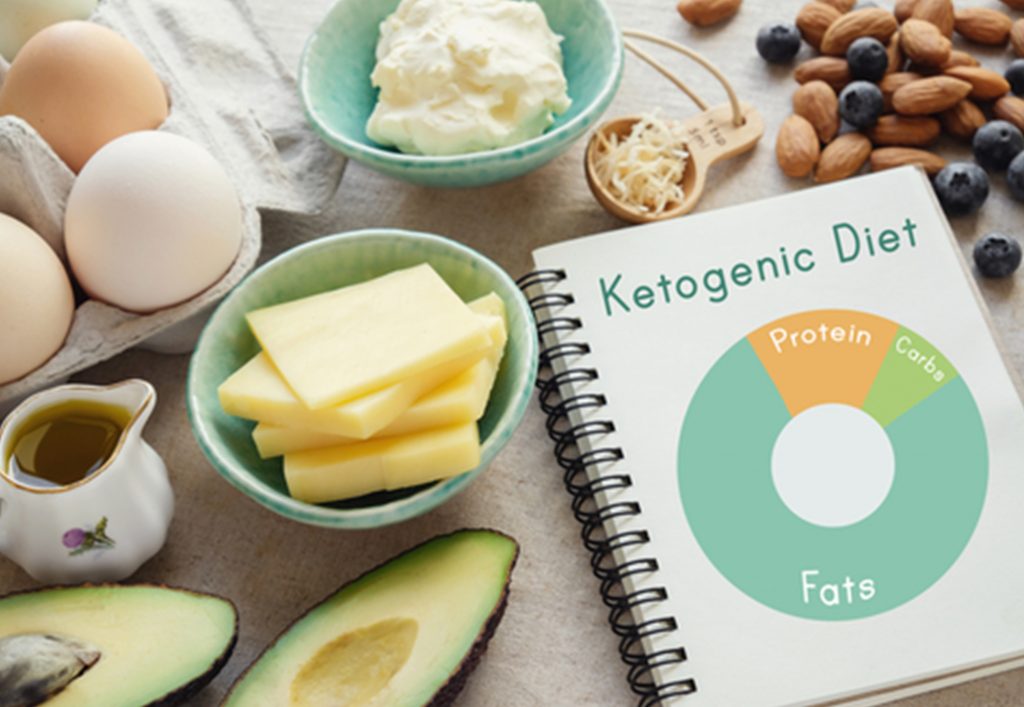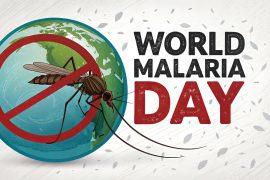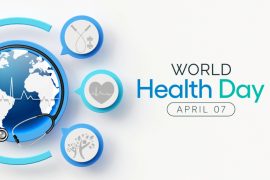The keto diet is a low-carbohydrate, fat-rich diet that has been gaining popularity not just in the fitness community, but all around the world. This weight loss plan is derived from the Atkins Diet (a commercially successful low carb, high protein diet which started the buzz around Low Carb diets). Currently, other low-carb diets such as the Paleo, South Beach, and Dukan diets are high-protein diets but are moderate in fat. In contrast, the ketogenic diet follows a distinct strategy towards consumable protein and fat content for achieving weight loss. In this approach, the content of fat is exceedingly high, generally 70% to 80%, with minimized protein consumption.
The basis of a Ketogenic diet is to deprive the body of its main source of energy- glucose. In place of it, an alternative fuel is created from the fat stored in the body. This fuel is called Ketones, which is where ‘Keto’ Diet is conferred from. The body requires glucose – derived from starchy/ carb rich foods, in a steady supply. Since it cannot store glucose, this glucose needs to be supplied daily. When that doesn’t happen, the body uses the stored glucose present in the liver. If the condition continues, the insulin levels in the blood declines and fat is automatically substituted as primary fuel.



The liver produces ketone bodies from fat, which can be used in the absence of glucose. In the state of ketosis- a state even healthy people experience during fasting or strenuous exercise, ketone bodies accumulate in the blood. The duration it takes for a person to reach the state or the number of ketones accumulated, all differ individually. however if not done right, one can reach a harmful state called ketoacidosis, which is caused by the formation of dangerously toxic levels of acid produced in the blood by excessive ketone bodies.
While there are different versions of the diet that can be followed, all of them ban carb rich foods. These range from the obvious bread, cereal, pasta, rice to some non-obvious foods like beans, legumes and most fruits. Instead this diet promotes food high in saturated fat like lard, butter, fatty cuts of meat, processed meats as well as unsaturated fats such as nuts, seeds, avocados, plant oils, and oily fish.



Strategies propose following a ketogenic diet till you bring your weight to an appropriate level. After achieving the targeted weight loss, you may follow this diet for few days in a week or few weeks in a month, to prevent regaining weight. You can interchange the above phenomena by allowing higher carbohydrate consumption during the rest of the days. The amount of protein in a ketogenic diet is kept moderate in comparison with other low-carb high-protein diets, because eating too much protein can come in the way of ketosis as the amino acids present can also be substituted for glucose. A ketogenic diet specifies enough protein to preserve lean body mass, including muscle, but that will still cause ketosis.
It is important to keep in mind that while there is research present in favor of the effectiveness of this diet, it is only for the short term. It is also known to bring about other positive changes that come with being overweight such as insulin resistance, high blood pressure, and elevated cholesterol and triglycerides.



However the diet comes not without its drawbacks. One may experience hunger, fatigue, low mood, irritability, constipation, headaches, and brain “fog.”- A cognitive dysfunction involving memory problems. While these conditions may subside, restricting oneself from eating all these readily accessible items on a daily basis may be challenging. Other not-so-good effects of a long-term ketogenic diet have arisen, which include an increased risk of kidney stones and osteoporosis, increased blood levels of uric acid (a risk factor for gout). Other Possible nutrient deficiencies may appear if a variety of recommended foods on the ketogenic diet are excluded. Therefore it is integral to not only concentrate on eating high-fat foods, but also to combine in one’s diet, a variety of the allowed meats, fish, vegetables, fruits, nuts, and seeds regularly to ensure adequate intakes of fiber, B vitamins, and minerals (iron, magnesium, zinc)—nutrients typically found in foods like whole grains that are restricted from the diet.
Since whole food groups are not included, guidance from a registered dietitian may be helpful in maintaining a ketogenic diet that minimizes nutrient deficiencies.




